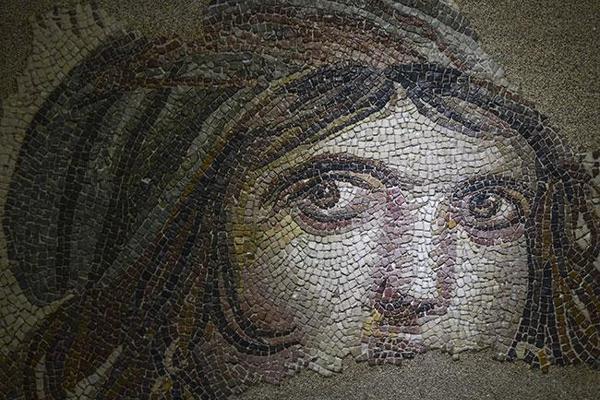12 ‘Gypsy Girl’ mosaics return to Turkey from US
CHICAGO


The Turkish Culture and Tourism Ministry signed an agreement on May 14 with Bowling Green State University (BGSU) in Ohio in the United States for the return of 12 ancient Zeugma mosaic pieces looted during illegal excavations in Turkey’s southeastern province of Gaziantep nearly 50 years ago.
“We are very happy that the Zeugma pieces are being returned to Turkey. The importance of carrying on cultural relations in the international arena by a mutual understanding has been underlined once again,” said Turkish Culture and Tourism Ministry’s New York office director Tülin Sermin Özduran, who signed the agreement.
She thanked the authorities of Turkish Foreign and Interior Ministries as well as the Gaziantep Metropolitan Municipality for their efforts.
Turkish Consul General in Chicago Umut Acar, who hosted the signing ceremony, also thanked the Foreign Ministry and the Culture and Tourism Ministry for their efforts to return archaeological remains and pieces of cultural heritage to Turkey from all over the world, state-run Anadolu Agency reported.
BGSU President Rodney Rogers said they took it as a legal and ethical duty to return the tile fragments to Turkey.
“Legally, there’s one question and then there’s what we believe is the right decision … Unbeknownst to us, these items appear to have been removed in an improper way. Therefore, we believe it is our duty as a university to allow these pieces, which have historical significance to Turkey and the citizens of Turkey, but also to society in general, [to be returned] to their home,” he said at the ceremony, according to the daily The Blade based in Toledo, Ohio.
Raymond Craig, dean of the BGSU College of Arts and Sciences, and Sean Fitzgerald, general counsel for the university also signed the agreement.
According to the agreement, the cost of packing and transferring tiles back to Turkey later in 2018 will be paid by the country’s ministry. The BGSU will receive high-quality replicas of the mosaics from the Metropolitan Municipality of Gaziantep.
The BGSU purchased the pieces for $35,000 from antiquities dealer Peter Marks in 1965. They were being exhibited under thick protective glass on the floor of the university’s Wolfe Center for the Arts.
The pieces had been said to be part of approved archaeological digs overseen by Princeton University in Turkey’s ancient city of Antioch, modern-day Antakya, until 2012. Then researchers revealed that the pieces of chiseled stone and glass depicting masks of ancient Greek figures and birds actually formed part of a frame of a mosaic panel known as “Gypsy Girl,” which is now a symbol of the ancient city of Zeugma and the province of Gaziantep.
The Culture and Tourism Ministry ran a campaign and made several formal requests to return the pieces.
